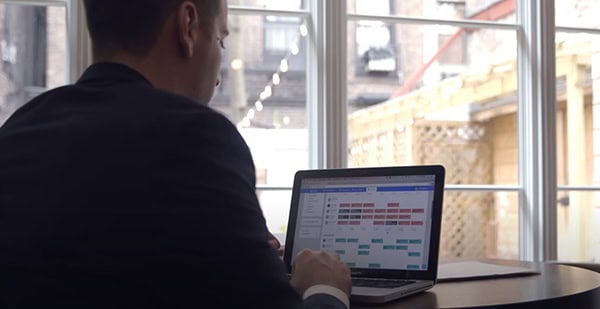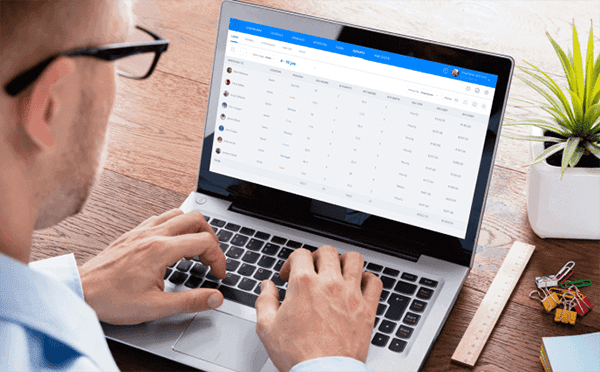Employee Timekeeping: What It Is and Why It Matters
Employee timekeeping is a foundational element of every business, large and smal...

Tracking employee hours with timesheet software is an essential activity for most businesses. Is your system set up so that it makes the most of the digital tools and features that come with this software? Are there things you can do to improve the way your team tracks time?
In this article, we discuss some of the best things you can do to get the most out of your timesheet software.

The right timesheet software can make a huge difference in the way your business tracks employee work hours.
Choose software that meets the specific needs of your team but also fits easily into the way they already work. Keep in mind that it’s much easier to implement new tools into an existing system than it is to create a brand new system around brand new tools.
When investigating timesheet software, look for more than just time tracking tools. Consider things such as:
In regard to the second bullet point above, choosing a timesheet software with additional features — or choosing a workforce management app with timesheet tools — can go a long way toward improving not just your team’s time tracking, but their entire workflow as well.
Sling, for example, includes advanced employee scheduling, labor cost optimization, robust communication features, and task management in addition to its built-in time clock and work hour tracking tools.
That’s a long list of features that can improve the way you and your team work.
Ultimately, the software you use will serve as the foundation for a large part of your operation, so finding the right fit is extremely important.
Without input from you, the time tracking process can get complicated and chaotic very quickly. Setting up rules, regulations, and policies will make the system much easier to navigate and may help your team produce timesheets that are as accurate as possible.
When creating your policies, include information about:
It can also be extremely useful to encourage employees to track time as they go rather than at the end of the work day. Doing so ensures that the final timesheet is accurate and minimizes errors that can happen when team members rely on their memory after a long day’s work.
This is especially important for employees who need to track time for different tasks while they’re on the job. Trying to remember when they started and stopped a task at the end of the day can be difficult and cause them to unintentionally inflate their work hours (a form of time theft).
Even employees who only need to clock-in when they start work and clock-out when they stop work should follow this rule (meaning they record the time when they arrive and record it again when they leave).
No matter how intuitive and easy to use it is, don’t expect your team to figure out the software on their own. Train your team to use the software efficiently and effectively and where to look if they have problems or questions (typically, your employee handbook).
Ideally, the user interface for tracking time should be relatively simple — enter a task, tap to start, and tap to stop — but you also want to train your employees to use the other features that come with the software.
They may not use these other tools very often, but when they do need them, it can make their job — and your job later on in the payroll process — much easier.
For more information on training your team to work smarter, take a few minutes to read these articles from the Sling blog:

After each employee turns in their work hours, make it mandatory for managers to review the numbers and approve the final timesheet.
This can help:
Implementing managerial review and approval before the timesheets move on to payroll doesn’t mean that you (or your bookkeeper) shouldn’t review them as well — you absolutely should. Checking for accuracy at every step of the process ensures that your payroll is correct.
Getting employees to turn in their timesheets by the deadline you set can be a difficult process in and of itself.
With automated reminders, you don’t have to worry about chasing down a delinquent team member to get them to turn in their work hours — at least at first.
You can set the timesheet software to send notifications (e.g., email or SMS) to employees on certain dates (e.g., eight days before the deadline and four days before the deadline) in the hopes that they’ll submit their time card early.
Using automated reminders won’t necessarily eliminate the need for you to talk to an employee face to face, but it can help to reduce the number of those you do need to approach.
For more tips on using timesheet reminders to good effect, check out this article from the Sling blog: Timesheet Reminders: 15 Ways To Remind Your Team To Submit Their Timesheets.
Integrating your timesheet software with the business operation tools you already use can make your payroll and employee management much more streamlined.
For example, integrating your time tracking software with an employee information and labor data app can help you compare scheduled versus actual labor spend for more accurate planning and scheduling.
And that’s just the tip of the integration iceberg. Advanced workforce management software like Sling works seamlessly with:
With integrations like these, you may discover new, more effective ways to track work hours and run other aspects of your business.
Geofencing is an advanced feature that allows you to set boundaries around locations and then control what the software does when a device crosses into or out of those boundaries.
With Sling, for example, you can set a specific radius around your office, a worksite, or a second location and then set the software to:
For businesses that utilize a single-point-of-entry system, this feature may not be relevant. But for businesses that allow employees to record work hours on their smartphone, tablet, or laptop, geofencing can be an extremely important control for accurate time tracking.

If you need a timesheet solution that allows you to track hours for a workforce of any size and location, the Sling app can help.
Sling is an all-in-one workforce management tool that includes both mobile and on-site tools such as:
Try Sling today to experience firsthand how the timesheet and workforce management app can help you manage a team of any size and make the time tracking process as simple as possible.
For more free resources to help you manage your business better, organize and schedule your team, and track and calculate labor costs, visit GetSling.com today.
This content is for informational purposes and is not intended as legal, tax, HR, or any other professional advice. Please contact an attorney or other professional for specific advice.
See Here For Last Updated Dates: Link
Schedule faster, communicate better, get things done.